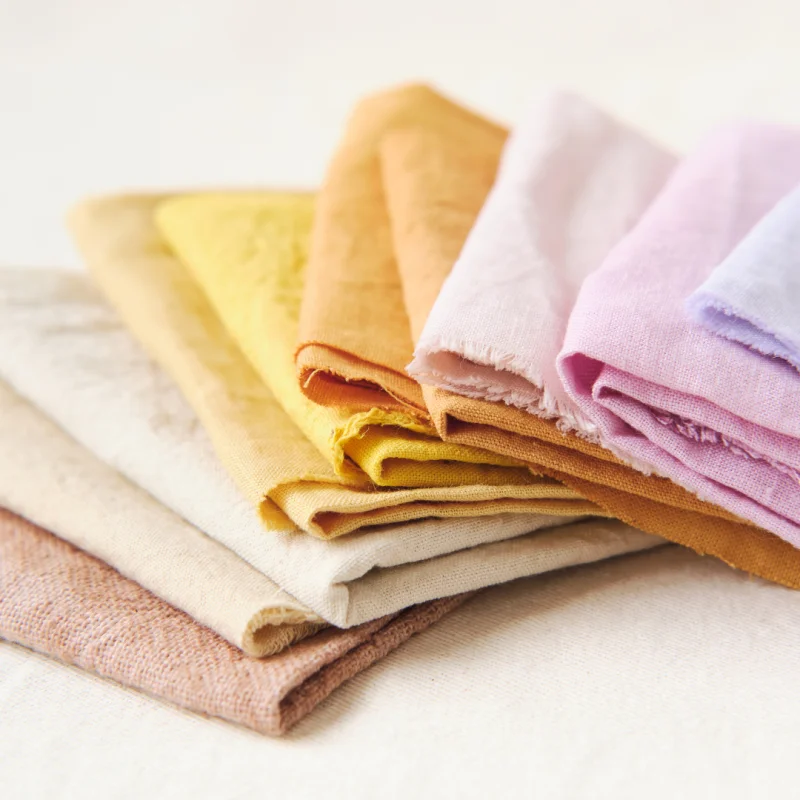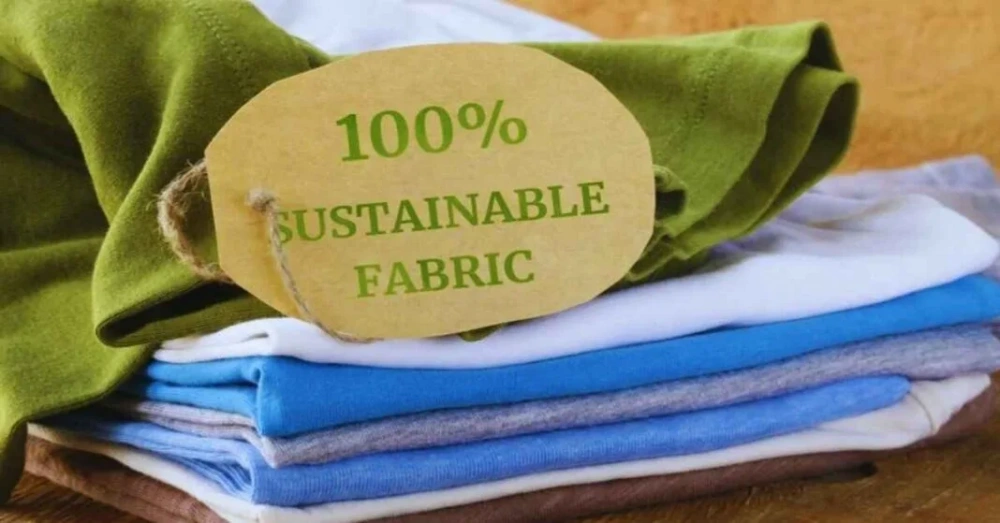
You need to prioritize sustainable fabric materials like organic cotton, TENCEL, and recycled polyester. These options help you reduce your impact on the environment and meet the growing demand for sustainable fashion. The statistics below show the urgent need for sustainable choices:
Statistic Description | Value | Environmental/Industry Impact |
|---|---|---|
Carbon emissions from fast fashion vs traditional fashion | 11 times higher | Highlights the urgent need to reduce fast fashion’s footprint through sustainable materials |
Water usage reduction in organic cotton farming vs conventional cotton | 91% less water | Demonstrates resource conservation benefits of organic cotton |
Greenhouse gas emissions reduction in recycled polyester production vs virgin polyester | Nearly 70% less | Shows significant emissions savings from recycled fabrics |
Percentage of new clothing made from synthetic fabrics containing plastic | 60% | Indicates the prevalence of plastics in fashion, emphasizing the need for sustainable alternatives |
Percentage of synthetic fabric clothing ending up in landfills | 87% | Highlights environmental urgency for sustainable fabric adoption |
Increase in sales of organic cotton products since 2009 | Over 20% | Reflects growing consumer demand for sustainable fabrics |
Patagonia’s recycled material usage in products (Fall 2024 collection) | Nearly 99% | Example of industry leadership in sustainable fabric adoption |
Friendtex supports your sourcing journey with quality, flexibility, and transparent supply chains. Certifications and traceability build trust and ensure you align with sustainable materials that protect the environment and promote slow fashion.
Key Takeaways
Choose sustainable fabrics like organic cotton, hemp, linen, TENCEL, and recycled polyester to reduce environmental impact and meet customer demand.
Look for trusted certifications, such as GOTS, OEKO-TEX, and Bluesign, to ensure that fabrics are eco-friendly and ethically produced.
Work with transparent suppliers who provide traceability and support fair labor to build customer trust and brand reputation.
Match fabric choices to your product needs, balancing durability, comfort, and sustainability for the best results.
Partner with experienced manufacturers like Friendtex to access certified, lower-impact materials and expert support for sustainable collections.
Sustainable Fabric Materials
What Makes a Fabric Sustainable?
You want to choose sustainable fabric materials that protect the environment and support ethical practices. Sustainable fabrics use fewer resources, create less waste, and help reduce pollution. For example, improvements in cotton farming have led to 30% less land use, 68% less soil erosion, and 75% less irrigation water.
These changes lower the impact on the environment and make fabric production more eco-friendly. Sustainable fabrics also use closed-loop water systems and energy-efficient dyeing, which cut water and energy use by up to 50%.
Factories that use renewable energy and non-toxic chemicals help create environmentally friendly and lower-impact materials.
Sustainable fabric materials also support fair labor and safe working conditions. Brands that use sustainable fabrics show they care about people and the planet.
Choosing eco-friendly fabrics, such as certified organic cotton or environmentally sustainable fabrics, helps you build trust with your customers. Friendtex’s integrated supply chain and strict quality control make it easier for you to source lower-impact fabrics and eco-friendly fabrics for your collections.
Brands that use sustainable fabrics and transparent sourcing gain stronger customer loyalty and a better reputation in the market.
Key Certifications
Certifications help you prove that your sustainable fabrics meet high standards. The most important certifications include:
GOTS (Global Organic Textile Standard): Ensures certified organic cotton and other fibers are grown and processed without harmful chemicals.
OEKO-TEX Standard 100: Tests for harmful substances to make sure fabrics are safe for people and the environment.
Bluesign®: Focuses on sustainable production by checking every step for eco-friendly and safe practices.
Cradle to Cradle Certified™: Rates products for their impact on health, reuse, and the environment.
Industry reports show that over 80% of brands now require certifications from suppliers. These certifications help you trace products, manage risks, and meet regulations.
They also help you avoid high-risk regions and support your claims about sustainable fabric materials. Friendtex’s quality control and transparent supply chain make it easy for you to access certified, lower-impact materials for your sustainable clothing lines.
Top Sustainable Fabrics
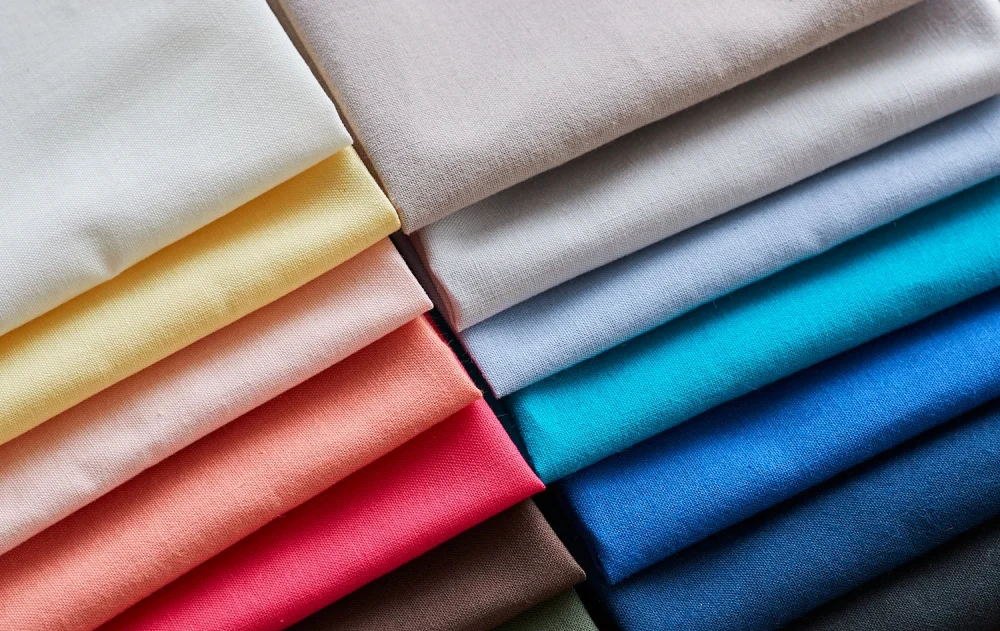
Organic Cotton
Organic cotton stands out as one of the most popular sustainable fabrics. You get cotton grown without synthetic pesticides or fertilizers, which helps protect soil health and water quality. Organic cotton farming uses crop rotation and natural pest control, making it safer for farmers and the environment.
Consumer Construct | Mean Score | Reliability |
|---|---|---|
Product Knowledge | ~3.57 | 0.85 |
Consumer Awareness | ~3.49 | 0.87 |
Environmental Knowledge | ~3.54 | 0.91 |
Purchase Intention | ~3.45 | 0.87 |
Buying Behaviour | ~3.63 | 0.95 |
These scores show that people recognize the benefits of organic cotton and want to buy organic cotton clothing. Organic cotton also scores higher on sustainability ratings compared to conventional cotton.
Key Benefits:
Uses up to 91% less water than conventional cotton.
Reduces soil erosion and chemical runoff.
Supports fair labor and safer working conditions.
Drawbacks:
Higher cost due to certification and lower yields.
Limited availability in some regions.
Certifications:
Look for GOTS and OEKO-TEX labels to ensure you source certified organic cotton.
Sourcing Tips:
Choose suppliers with transparent supply chains. Friendtex can help you access certified organic cotton through flexible OEM/ODM services and small batch orders.
Hemp
Hemp is a fast-growing plant that produces strong, durable fibers. You can use hemp for a wide range of sustainable clothing and accessories. Organic hemp grows with little water and no pesticides, and improves soil health.
Statistic Category | Data / Description |
|---|---|
Growth Height | 1.5m to 4m (up to 12 feet in 3-4 months) |
Biomass Yield | 3 to 8 tons dry stalk per acre; 1 ha produces ~12 tons dry matter/year |
CO₂ Absorption per Crop Cycle | Up to 30 tons CO₂ per hectare annually |
Export Growth | Hemp yarn and fabric exports increased by 30.97% from 2016 to 2020 |
Organic hemp absorbs more carbon than cotton and grows two crops per year. You help reduce greenhouse gases and support eco-friendly farming when you choose hemp.
Key Benefits:
Absorbs up to 22 tons of CO₂ per hectare each year.
Needs no pesticides or irrigation.
Cleans soil and water by absorbing heavy metals.
Drawbacks:
Processing can use more water and energy.
Some regions have limited processing facilities.
Certifications:
Look for GOTS or OEKO-TEX for organic hemp textiles.
Sourcing Tips:
Work with manufacturers like Friendtex who offer access to organic hemp and can help you create upcycled or reclaimed hemp products.
Linen
Linen comes from the flax plant and is one of the oldest natural fiber fabrics. You get a lightweight, breathable, and durable fabric that works well for summer clothing and home textiles.
Fiber Type | Water Usage (liters/kg) | Notes |
|---|---|---|
Linen (European) | 300–900 | Mostly rain-fed, minimal irrigation |
Organic Cotton | 7,000–9,000 | Low chemical input but irrigated |
Conventional Cotton | 10,000–20,000 | Heavy irrigation and chemical use |
Linen uses much less water than cotton and needs little to no synthetic fertilizers or pesticides. Organic linen offers even greater environmental benefits.
Key Benefits:
Uses 85% less water and 50% less energy than cotton.
Naturally pest-resistant and biodegradable.
Long-lasting and easy to recycle or upcycle.
Drawbacks:
Wrinkles easily.
Higher prices due to labor-intensive processing.
Certifications:
Look for European Flax, GOTS, or OEKO-TEX certifications.
Sourcing Tips:
Choose organic linen for the lowest impact. Friendtex can help you source organic linen and create eco-friendly, upcycled products for your brand.
TENCEL & Lyocell
TENCEL and Lyocell are modern sustainable fabrics made from wood pulp, usually from eucalyptus or beech trees. You get a soft, breathable, and strong fabric that works well for sustainable activewear, dresses, and shirts.
Sustainability Aspect | TENCEL™ / Lyocell (in linen blends) | Linen (for context) | Cotton (for comparison) |
|---|---|---|---|
Water Consumption | Low | Low | High |
Pesticide Use | Low | Low | High |
Biodegradability | Biodegradable | Biodegradable | Less biodegradable |
TENCEL and Lyocell use a closed-loop process that recycles water and solvents, making them eco-friendly choices.
Key Benefits:
Soft, smooth, and gentle on the skin.
Uses less water and energy than cotton.
Biodegradable and compostable.
Drawbacks:
Higher cost than conventional fabrics.
Limited color options due to natural dyeing.
Certifications:
Look for Lenzing TENCEL, OEKO-TEX, and FSC certifications.
Sourcing Tips:
Ask your supplier about closed-loop production. Friendtex can help you develop TENCEL and Lyocell collections with custom designs and quick sampling.
Recycled Polyester
Recycled polyester (rPET) is made from reclaimed plastic bottles and other recycled materials. You help reduce plastic waste and energy use by choosing rPET for your sustainable clothing lines.
Metric | Value | Significance |
|---|---|---|
Plastic bottles reused | 60 bottles/kg | Reduces plastic waste |
Energy use reduction | 61% | Major decrease in energy consumption |
Greenhouse gas emissions | 52% | Significant decrease in emissions |
Recycled polyester supports upcycled products and helps keep plastics out of landfills and oceans.
Key Benefits:
Uses up to 61% less energy than virgin polyester.
Reduces greenhouse gas emissions by 52%.
Supports circular fashion and upcycled materials.
Drawbacks:
Not biodegradable.
May release microplastics during washing.
Certifications:
Look for GRS (Global Recycled Standard) and OEKO-TEX certifications.
Sourcing Tips:
Choose suppliers who use post-consumer recycled materials. Friendtex offers rPET options for sustainable activewear and upcycled fashion collections.
Bamboo
Bamboo is a fast-growing plant that produces soft, durable, and eco-friendly fabrics. You get a fabric that is naturally antibacterial, highly absorbent, and gentle on the skin.
Bamboo grows up to 1 meter per day and regenerates quickly.
Absorbs five times more CO₂ and produces 35% more oxygen than similar plants.
Grows well on degraded soils and supports land restoration.
Bamboo plantations sequester more carbon than many trees.
Bamboo fabric works well for underwear, homewear, and sustainable clothing.
Key Benefits:
Rapid growth and high carbon sequestration.
Needs little water, pesticides, or fertilizers.
Soft, wrinkle-resistant, and naturally antibacterial.
Drawbacks:
Some processing methods use chemicals.
Mechanical processing is more eco-friendly but produces coarser fibers.
Certifications:
Look for OEKO-TEX and FSC certifications for bamboo textiles.
Sourcing Tips:
Ask about the processing method. Friendtex can help you source bamboo fabrics and create eco-friendly, upcycled products.
Piñatex & Plant-Based Leathers
Piñatex and other plant-based leathers use fibers from pineapple leaves, apples, grapes, and other plants. You get a vegan, sustainable alternative to animal leather.
Plant-based leathers use less water, energy, and land than animal leather.
Produce fewer greenhouse gas emissions.
Avoid toxic chemicals and animal exploitation.
The European market for Piñatex is growing, driven by rising vegan populations and sustainability awareness.
Key Benefits:
Reduces reliance on animal agriculture.
Supports upcycled and reclaimed materials.
Biodegradable or compostable, depending on the product.
Drawbacks:
Some plant-based leathers are not fully biodegradable.
Durability may vary by material.
Certifications:
Look for PETA-Approved Vegan and GRS certifications.
Sourcing Tips:
Choose plant-based leathers made from upcycled agricultural waste. Friendtex can help you develop plant-based leather accessories and upcycled products for your brand.
Modal & EcoVero
Modal and EcoVero are soft, breathable, and eco-friendly fabrics made from beechwood pulp. You get a fabric that feels like silk and works well for underwear, loungewear, and sustainable clothing.
EcoVero uses up to 50% less water and emits up to 50% less CO₂ than conventional viscose.
Modal is biodegradable and made in a closed-loop process.
Key Benefits:
Soft, smooth, and highly absorbent.
Lower environmental impact than conventional viscose.
Certified as eco-friendly and biodegradable.
Drawbacks:
Higher cost than standard viscose.
Limited availability in some markets.
Certifications:
Look for Lenzing EcoVero, OEKO-TEX, and FSC certifications.
Sourcing Tips:
Ask about the wood source and production process. Friendtex can help you create modal and EcoVero collections with custom designs and small batch options.
Econyl & Recycled Nylon
Econyl and other recycled nylon fabrics use reclaimed fishing nets, carpets, and industrial waste. You help reduce ocean plastic and landfill waste by choosing these sustainable fabrics.
Only 1% of clothing materials are recycled into new garments, while 87% end up in landfills.
Econyl supports circular fashion by turning waste into new, high-quality textiles.
Key Benefits:
Diverts waste from oceans and landfills.
Reduces energy use and carbon emissions.
Strong, durable, and suitable for swimwear and activewear.
Drawbacks:
Not biodegradable.
May release microplastics during washing.
Certifications:
Look for GRS and OEKO-TEX certifications for recycled nylon.
Sourcing Tips:
Choose suppliers who use reclaimed materials. Friendtex can help you develop upcycled swimwear, sustainable activewear, and accessories using Econyl and recycled nylon.
Tip: Choosing sustainable fabrics helps you reduce your environmental impact and meet growing consumer demand for eco-friendly, upcycled, and reclaimed products.
Partnering with manufacturers like Friendtex gives you access to a wide range of lower-impact materials and expert support for your sustainable fashion collections.
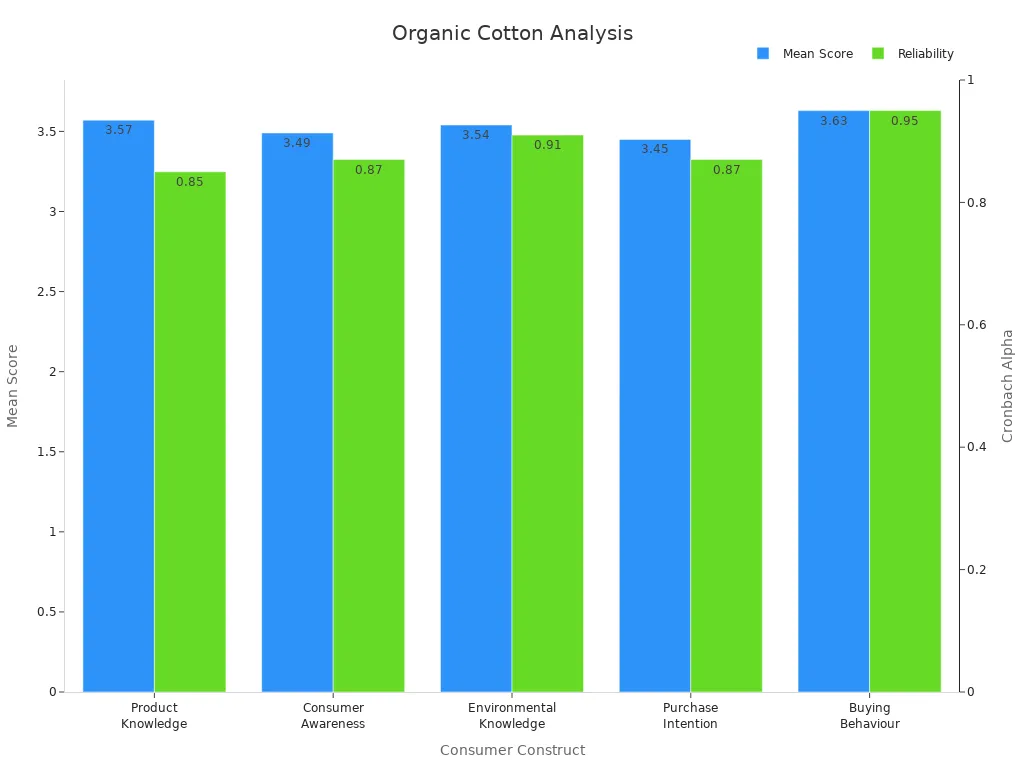
Comparing Sustainable Materials
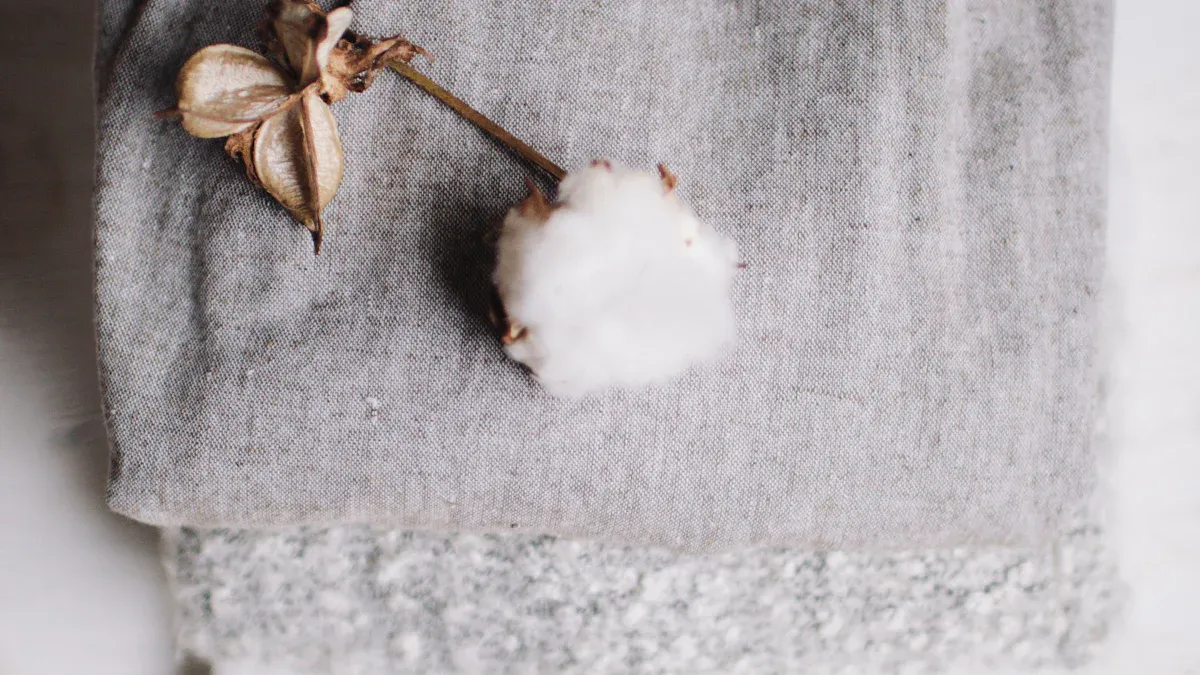
Benefits & Drawbacks
You need to compare sustainable fabrics carefully before making decisions for your brand. Each material has unique strengths and weaknesses. The table below gives you a clear overview of how some popular sustainable fabric materials stack up:
Fabric | Benefits | Drawbacks |
|---|---|---|
Organic Cotton | Uses less water, no harmful chemicals, supports fair labor | Higher cost, limited supply |
Hemp | Needs little water, no pesticides, improves soil, very durable | Can feel stiff at first, higher price |
Linen | Minimal water use, strong, biodegradable, grows in poor soil | Wrinkles easily, bleaching can reduce eco benefits |
TENCEL/Lyocell | Soft, moisture-wicking, closed-loop production, biodegradable | Industrial processing needed, higher cost |
Recycled Polyester | Reduces plastic waste, durable, supports circular fashion | Not biodegradable, may release microplastics |
Bamboo | Fast-growing, soft, antibacterial, low-water use | Chemical processing can harm the environment |
Econyl | Made from recycled waste, very durable, easy to care for | Not breathable, may release microfibers |
You see that lower-impact materials like organic hemp and linen offer strong environmental benefits. Some, like recycled polyester and Econyl, help reduce waste but may have other concerns.
Sourcing Tips
You want to make sure your sourcing process supports your sustainable goals. Here are some steps you can follow:
Define your sustainability goals and choose lower-impact materials that match your brand values.
Ask suppliers about certifications, fiber origin, and chemical use.
Check for transparent supply chains and traceability maps.
Audit suppliers for labor practices and environmental standards.
Use digital sourcing platforms to find certified, eco-friendly fabrics.
Partner with manufacturers who offer flexible minimums and support for upcycled or lower-impact fabrics.
Tip: Always request documentation and test reports to confirm claims about sustainable production and lower-impact materials.
Product Suitability
You should select sustainable fabrics based on your product’s needs. For example:
Choose organic cotton or modal for soft, everyday wear like t-shirts and underwear.
Use hemp or linen for durable, breathable summer clothing.
Pick TENCEL or EcoVero for moisture-wicking, sustainable activewear.
Select recycled polyester or Econyl for outerwear, swimwear, or products needing extra durability.
Consider bamboo for eco-friendly fabrics in home wear or products needing antibacterial properties.
A quick checklist for choosing lower-impact materials:
Is the fabric certified and traceable?
Does it match your product’s durability and comfort needs?
Can it be recycled or composted at end-of-life?
Does it support your brand’s sustainable story?
Conclusion
You build a future-ready brand when you choose sustainable fabric materials that match your values and prioritize transparency. Certifications like GOTS and Bluesign show your commitment to sustainable production and help consumers trust your sustainable clothing.
Research shows that honest reporting and strong partnerships with experienced manufacturers, such as Friendtex, lead to better results in a sustainable fashion. Start by auditing your materials, then pilot new eco-friendly fabrics or upcycled products in your next collection.
These steps help you create lower-impact materials and support a more sustainable industry.
FAQ
What are the main benefits of choosing sustainable fabric materials for your brand?
You help protect the environment and support ethical practices. Sustainable fabric materials use fewer resources, reduce waste, and promote fair labor. You also build trust with customers who want eco-friendly and responsible products.
How do you know if a fabric is truly sustainable?
You should look for certifications like GOTS, OEKO-TEX, or Bluesign. These labels show that the fabric meets strict standards for sustainable production, safe chemicals, and ethical sourcing. Always ask your supplier for documentation.
Can you use recycled materials in sustainable clothing?
Yes, you can use recycled materials like recycled polyester, recycled cotton, or Econyl. These lower-impact materials help reduce waste and support circular fashion. You create upcycled products that keep plastics and textiles out of landfills.
What makes organic hemp and organic linen good choices for sustainable fashion?
Organic hemp and organic linen grow with little water and no pesticides. These natural fiber fabrics improve soil health and last a long time. You get durable, breathable, and environmentally friendly options for sustainable clothing.
How can manufacturers like Friendtex help you source eco-friendly fabrics?
Manufacturers like Friendtex offer access to a wide range of eco-friendly fabrics, including certified organic cotton, plant-based leathers, and sustainable activewear. You benefit from flexible orders, transparent supply chains, and expert support for upcycled and lower-impact fabrics.


